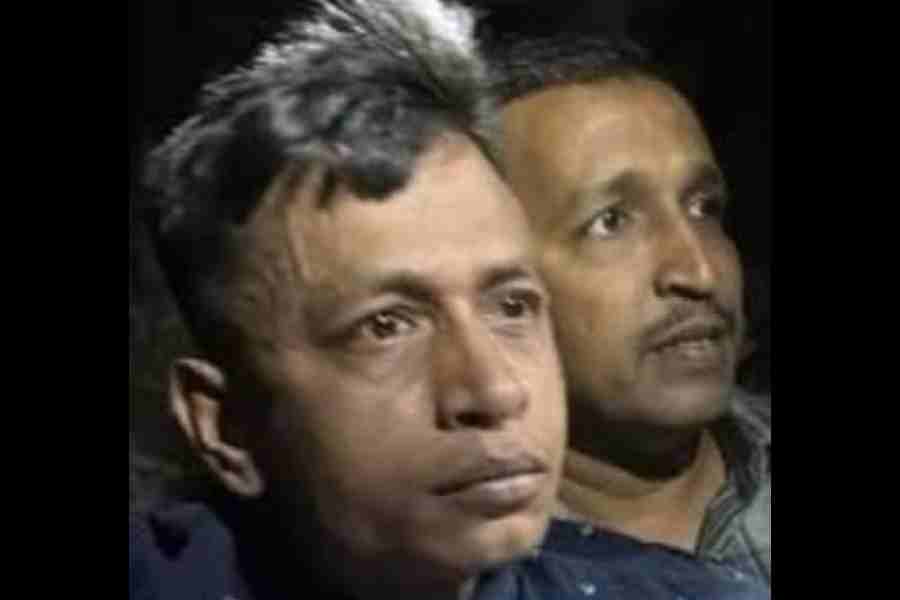ANOTHER INDIA: THE MAKING OF THE WORLD’S LARGEST MUSLIM MINORITY, 1947-77
By Pratinav Anil
Penguin, Rs 999
Another India promises a history of Indian Muslims under Jawaharlal Nehru. The author is a young Oxford historian out to conquer the world with an unabashed, Perry Anderson-like disdain for “Nehru’s phthisic welfare state”. But while Anderson is guarded, Anil proudly wears his acquired British snobbery on his sleeves.
Twitter-like epithets abound: M.K. Gandhi is called a gaslighter, Vallabhbhai Patel “an intemperate man”, and Jawaharlal Nehru, “a whingeing child”. Anil gleefully quotes Viceroy Wavell, identifying Asaf Ali as a “worm” and the historian, Shafaat Ahmed Khan, as a “half-wit”. B.R, Ambedkar’s pivotal role in shaping the secular character of the Indian Constitution is downplayed on the basis of two stray quotations. Maulana Azad, the first minister of education of the fledgling republic, the man who championed universal primary education and founded the first IIT and the UGC, is written off as a depressive and dipsomaniac.
Ambitiously, Anil challenges scholars like Amartya Sen, Ashis Nandy and Partha Chatterjee, dismissing their research as “narratives” that take for granted the “distinctiveness of such a thing as Nehruvian secularism.” His engagement with their research is patchy though: he cites them all from Rajeev Bhargava’s 1998 volume, Secularism and its Critics. Elsewhere, questionable citations back strong assertions — the proof of the eviction of “one Muslim every three minutes” in 1963 by Nehru’s government is an unattributed contemporary article from Pakistan Times.
A focus on governmentality, in a restrictive, non-Foucauldian sense, makes the book completely ignore the politico-cultural inheritances bequeathed by revolutionaries of Muslim origin in pre-Partition India who were neither affiliated with the Congress nor the Muslim League. While mapping the careers of the figureheads of the Khilafat Movement and their support for Gandhi’s Non-Cooperation Movement, it is oblivious of individuals like Kazi Nazrul Islam and Muzaffar Ahmad who were opposed to the Khilafatists for their fundamentalism and went on to found the left-wing Workers and Peasants Party in 1925. By this time, egalitarian and socialist sentiments
had made headway into the Indian Muslim quam, a phenomenon Anil overlooks completely. In 1920, most of the émigré founders of the Communist Party of India at Tashkent were revolutionaries with Muslim pasts — Muhammed Shafique,
Muhammad Ali Sepassi, Ghulam Hussain, and Shaukat Usmani. Later, while discussing the aftereffects of Chauri Chaura, the emancipatory aspirations of the Hindustan Socialist Republican Association, or the shahadat of Ashfaqulla Khan alongside Bhagat Singh are judged too inconsequential to be mentioned. The book also omits the inclusive, secular ethos of Subhas Chandra Bose’s INA, the Naval Mutiny of 1946, and the protests against the INA trials in 1945-46.
By the time Anil identifies as “Muslims” both the Razakars and the communist insurgents fighting the princely state of Hyderabad during the Telangana Rebellion of 1944-46, his argument on the lack of agency of Indian Muslims enters shaky grounds. It persists by refusing to concede that millions of Indian Muslims, who chose to stay here rather than migrate to Pakistan, negotiated Nehru’s vision of an inclusive, secular nation-state in complex terms, while many chose to join the ranks of the socialists and communists to press for social change. But to accuse them of en masse succumbing to a propitiatory worldview is reductive, elitist, and, for the lack of better words, outright nasty.
Post-Partition, Anil focuses on career politicians, riots, and the history of the Jama’at-i-Islami. His conclusion mentions the rise of Hindutva, ending in the 2020s with the Shaheen Bagh protestors, “carping about the Constitution.” By virtue of sighting (probably on YouTube) two burqa-clad women holding politically-incorrect placards, he finds all the anti-CAA protestors of India predisposed to exhibiting ashraf contempt for the “premier’s working-class origins.” Earlier, he identifies the protesting students of Jamia Millia Islamia as “Khilafatists de nos jours”.
In brief, Another India reads “unity in diversity” as a “tired apothegm”, as it argues that “Muslim politics” within the Republic of India “has been a politics manqué.”
This book might find takers in the disintegrating republic of now. Alongside an absence of a serious query into Hindutva’s role in this ‘making’, prospective readers should prepare themselves for expressions like “regnant Weltanschauungen” and the recursive use of Kulturcampf and Rechsstaat. When an Indian-origin historian uses these expressions without clarification, it is not exactly cultural elitism, you see. Blame Nehru, and Shashi Tharoor.











